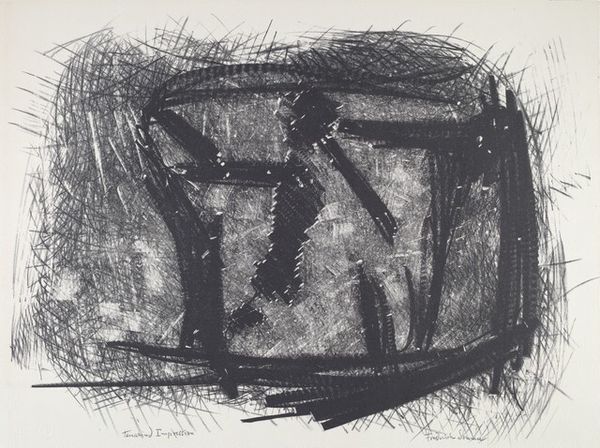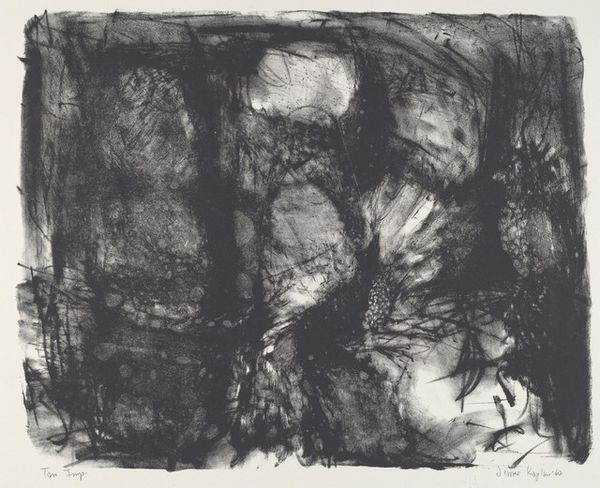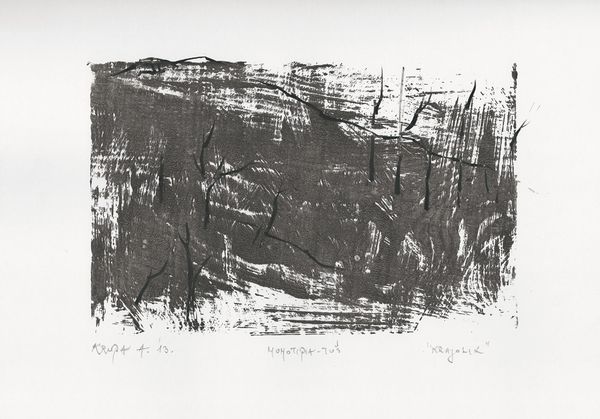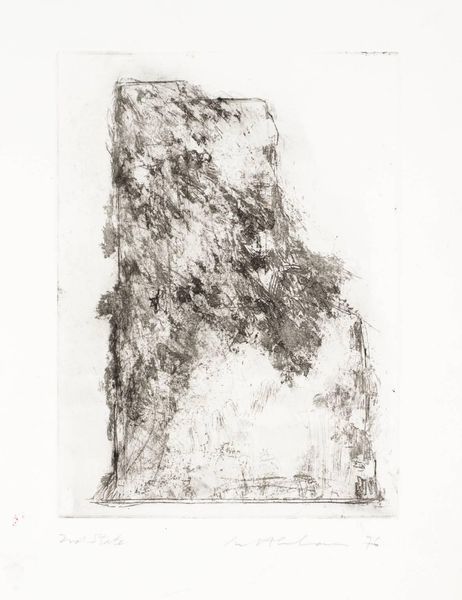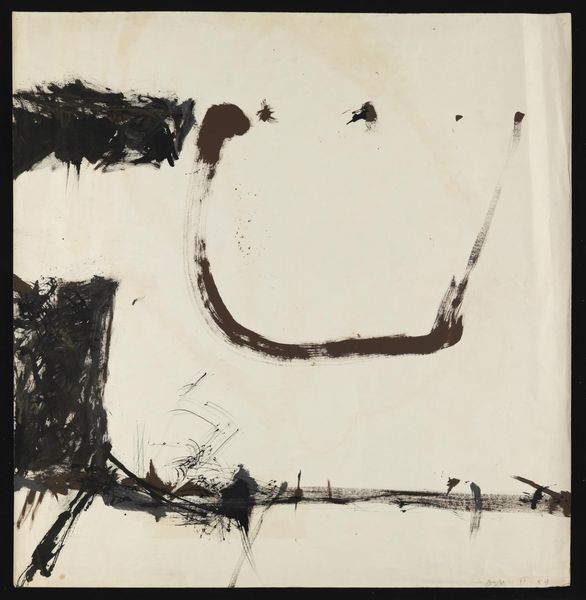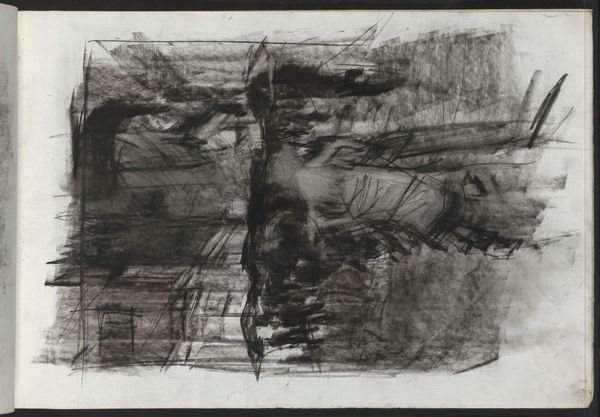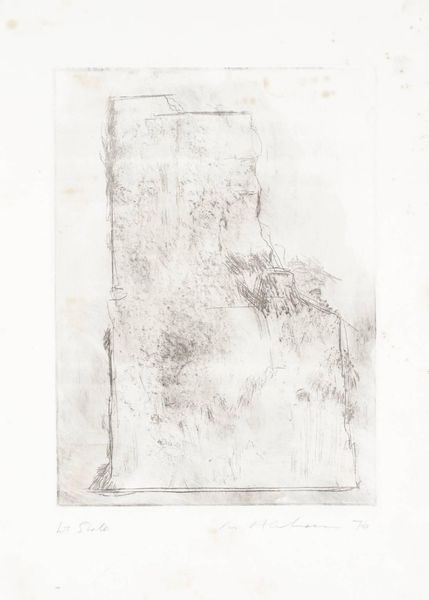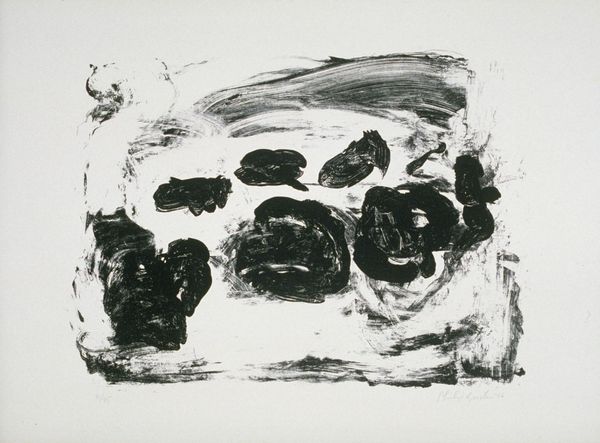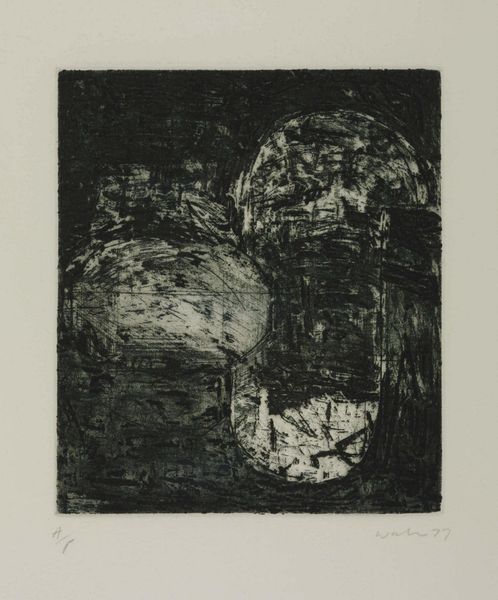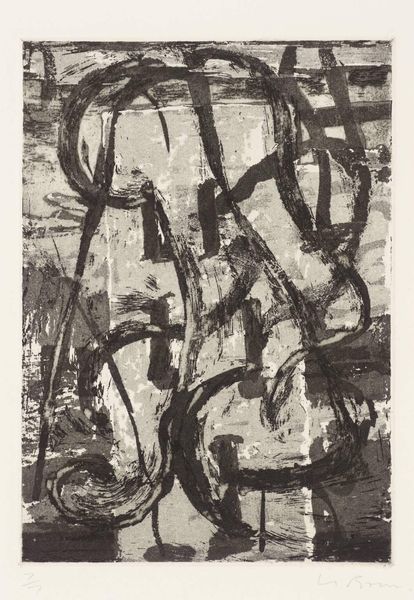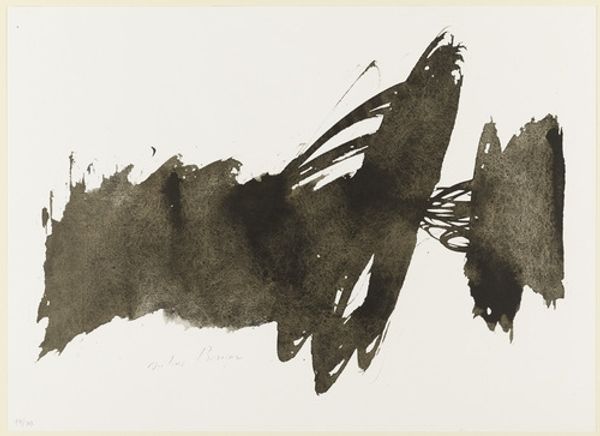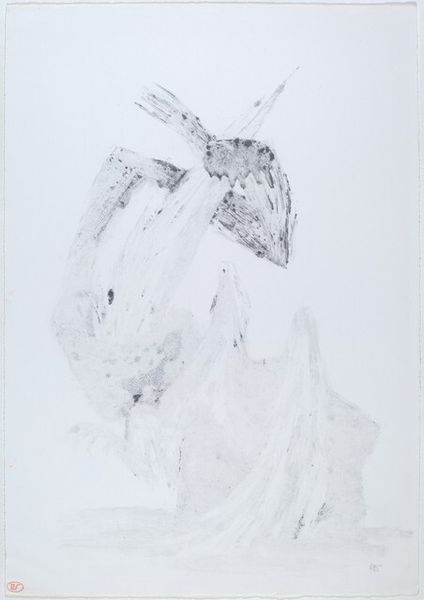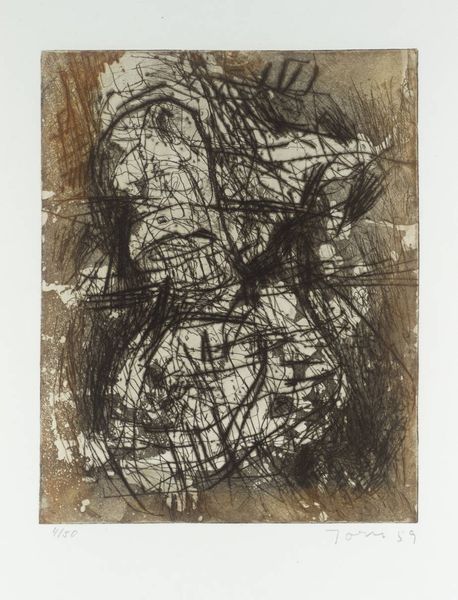
drawing, charcoal
#
drawing
#
pen sketch
#
figuration
#
abstract
#
ink drawing experimentation
#
charcoal
Dimensions: image: 26 x 35.4 cm (10 1/4 x 13 15/16 in.)
Copyright: National Gallery of Art: CC0 1.0
Curator: We are now viewing Adriena Šimotová’s “Butterfly for Anne,” created in 1989 using charcoal and ink. Editor: It feels…almost violently tender. There's a rawness to the application of the charcoal that creates this immediate sense of something fragile being pulled apart. Curator: Indeed. Notice the artist's abstract handling of figuration here. Šimotová captures the essence of a butterfly without explicitly rendering its form in a representational manner. It's about suggestion and feeling. Editor: The medium contributes to that feeling. You can see the smudging, the way the artist has worked and reworked the charcoal. It’s as though the butterfly itself is disintegrating on the page or perhaps the material application reveals the subject is always already broken. The texture evokes movement but also fragility. How would you describe it in the context of her broader work? Curator: Šimotová often explores themes of human fragility and the transience of life. The butterfly becomes a potent symbol in this context—a metaphor for transformation but also for the ephemeral nature of existence. Consider how the abstract strokes contribute to this duality: form dissolving, reforming, ever in flux. It references post-structuralist ideas about identity and the constant process of becoming. Editor: It also suggests to me the labor involved; look at how heavily she's marked the paper and how forceful the artist's gestures are. It feels very physical. Was she, at that stage in her career, deliberately highlighting the active artistic process in reaction to, or in support of, the social issues of the late eighties? Curator: Her artistic approach throughout the '80s, veered into very subtle gestures that reflect this awareness. She doesn't ignore socio-historical conditions, however, they become enmeshed in more fundamental questioning about existential anxiety, artistic experimentation and a human condition, so the political readings never quite stand alone. Editor: Very well. It's striking how the work embraces and reveals its own making; the materiality is so crucial. Curator: Yes, a potent visual metaphor, I agree. I hope the viewer takes a moment to really register the push and pull present here. Editor: I concur, an enduring invitation to introspection and attentiveness.
Comments
No comments
Be the first to comment and join the conversation on the ultimate creative platform.
